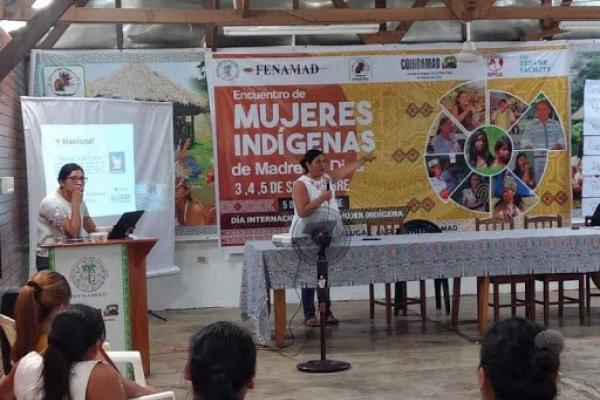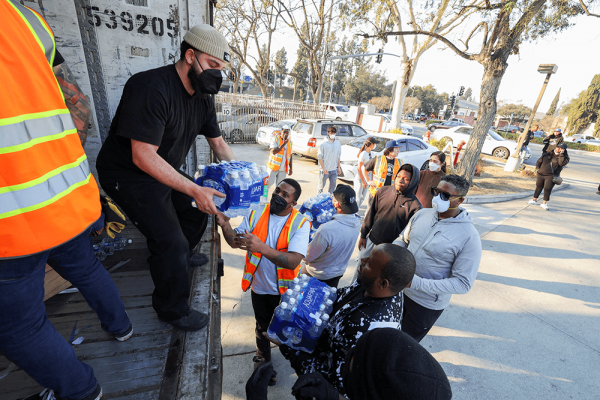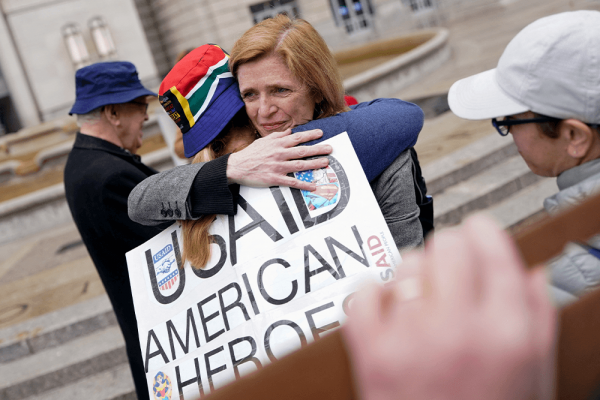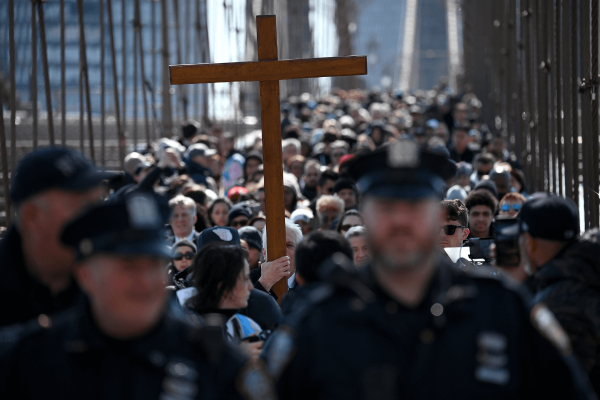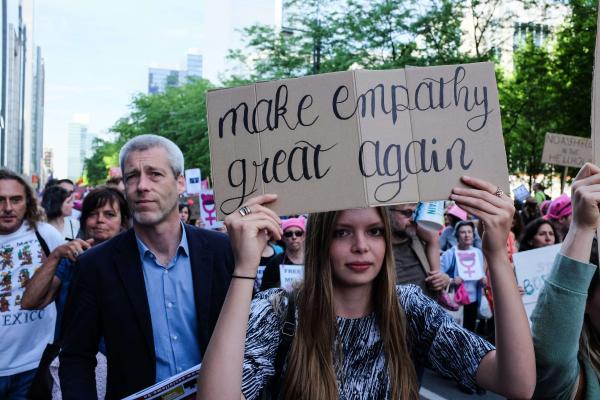MEDELLIN, COLOMBIA – Across the globe, women are on the front lines of protecting traditional and Indigenous land from threats like mining, ranching, and a range of other challenges — but they often struggle to have their own rights to these lands recognized and respected. In some places, the church is stepping in.
In the developing world, women may make up only 10 percent of landowners, according to the U.N.’s Food and Agriculture Organization (FAO). Even those who do have a deed or title may still not have a strong say over their land: They may face social restrictions that make them dependent on men for farming, or if a marriage ends in divorce, a woman may receive a smaller, less fertile parcel of land.
Global climate experts have made clear the compounding nature of this injustice: In 2019, the Intergovernmental Panel on Climate Change (IPCC) joined academics and NGOs in acknowledging that secure Indigenous land tenure is one of the biggest weapons in the arsenal against the climate crisis — a topic that affects both genders on a local and global level.
And a new report released in March from the World Resources Institute (WRI), an international NGO, highlights the challenges — and offers guidelines — for securing land titles for women, both on an individual basis and at a collective level. A key is ensuring women are on the governing bodies for collectively held lands, a common structure for Indigenous or traditional landholdings.
Challenges and opportunities in collective communities
Anitalia Pijachi, an Indigenous leader in a community outside Leticia in Colombia’s Amazon region, says many Indigenous communities, including her own, have their own worldview or “cosmovision” when it comes to land and the role of women.
“Men and women work together to manage the land, but women are seen as representations of Mother Nature,” she said.
Pijachi calls individual land ownership a white or Western concept.
“In Colombia, all the Indigenous territories are titled under the name of a collective … at the local level, each Indigenous group has their own ancestral lands,” she said.
pasted_image_0.png

Silene Ramirez, gender justice manager at the Rights and Resources Initiative, an international NGO, said there are challenges and nuances when talking about individual land rights in communities where land is ancestral and administered on a community-wide basis.
“The cosmovision, their concept of good living, is outside the capitalist idea of titling,” she said, adding that one of the main concerns of women within these communities is making sure that the men aren’t selling the land or negotiating with a third party without their consent.
María Eugenia Carrizo, a Catholic missionary who lives in the Beni Department of northern Bolivia, told Sojourners that in her community, the land is communal, with each family having their share of communal lands.
There, a small team of priests and laypersons in her parish, as part of an Amazon-wide network called REPAM, do a wide range of social work, education, and training — this includes empowering women and helping with land claims.
“We are working in the recovery of territory, lending technical assistance and backing,” she said. “This is our work.”
Celine Salcedo-La Viña, author of the WRI report and a legal and social researcher at WRI, says that achieving full land rights for women goes beyond titling, that is, getting a woman's name on the deed or title to their land.
“It requires a range of interventions — from including them in extension services [to] sidestepping some norms that make it taboo for women to plow their own land,” she said.
Salcedo-La Viña, originally from the Philippines and now based in the U.S., said that in many countries around the world, although rights are protected by law, they are rarely upheld or implemented in practice.
“In Tanzania, you have a law that respects women’s rights within land rights,” she said, “but then on the ground, it’s the head of the household – the husband or a male relative – who holds the title.”
She said that in Ethiopia’s Amhara Region, a cultural taboo about women plowing the land forces women with titles to their land to cede control of harvesting to farm laborers – who are occasionally their former husbands.
Karol Boudreaux, chief program officer with land rights group Landesa, told Sojourners that having more secure rights leads to women having more voice and decision making within their household and within their communities.
“In Namibia, in community conservancies, new opportunities have opened up for women to become leaders of the conservancy, as women are often seen as more careful managers of financial resources,” she said, “On the household level, increased land rights can lead to increased spending on education and health care for their children.”
Where the church steps in
In recent years, the Catholic Church has been among those leading efforts to protect rights in the Amazon region. In fact, in Pope Francis’ groundbreaking 2015 encyclical, Laudato si', he specifically addressed some of the most pressing environmental and social issues facing the Amazon.
Pijachi was a delegate at the Vatican’s October Amazon synod, where she helped examine a wide range of topics about the region including Indigenous land rights, biodiversity, and social challenges.
The role of women was a key theme, too, with Indigenous women from all of the Amazon basin countries in key roles. One of the recommendations passed by 181 bishops was to re-examine the role of female deacons in the Amazon region.
According to Boudreaux, the role of large pillars of civil society — like the Catholic Church — is key in the fight for land rights, including helping to coordinate a land demarcation of a territorial claim.
“Land rights is a very sensitive issue and having a trusted arbiter, and an arbiter that can have the ability to navigate the system inside the government, is very valuable,” Boudreaux said.
This is exactly what the Church did in Arazaire, in the Madre de Dios region of the Peruvian Amazon, where Marcia Edith Tije is one of the community leaders who has worked with Catholic charity Caritas to demarcate and title their community lands.
But institutional support isn’t the only way that the church can be supportive.
According to Salcedo-La Viña, the church can also offer community that provides one-on-one support. While doing field work in Oaxaca, Mexico, Salcedo-La Viña observed a community where women were very involved in three churches that made up the faith community there.
“These women were heavily involved in the church, and this involvement increased their confidence and skills,” she said. “This then gave them the skills to be more vocal in the governance bodies that impact on land tenure.”
Got something to say about what you're reading? We value your feedback!
